I have created a custom loss function to deal with binary class imbalance, but my loss function does not improve per epoch. For metrics, I'm using precision and recall.
Is this a design issue where I'm not picking good hyper-parameters?
weights = [np.array([.10,.90]), np.array([.5,.5]), np.array([.1,.99]), np.array([.25,.75]), np.array([.35,.65])]
for weight in weights:
print('Model with weights {a}'.format(a=weight))
model = keras.models.Sequential([
keras.layers.Flatten(), #input_shape=[X_train.shape[1]]
keras.layers.Dense(32, activation='relu'),
keras.layers.Dense(32, activation='relu'),
keras.layers.Dense(1, activation='sigmoid')])
model.compile(loss=weighted_loss(weight),metrics=[tf.keras.metrics.Precision(), tf.keras.metrics.Recall()])
n_epochs = 10
history = model.fit(X_train.astype('float32'), y_train.values.astype('float32'), epochs=n_epochs, validation_data=(X_test.astype('float32'), y_test.values.astype('float32')), batch_size=64)
model.evaluate(X_test.astype('float32'), y_test.astype('float32'))
pd.DataFrame(history.history).plot(figsize=(8, 5))
plt.grid(True); plt.gca().set_ylim(0, 1); plt.show()
Custom loss function to deal with class imbalance issue:
def weighted_loss(weights):
weights = K.variable(weights)
def loss(y_true, y_pred):
y_pred /= K.sum(y_pred, axis=-1, keepdims=True)
y_pred = K.clip(y_pred, K.epsilon(), 1 - K.epsilon())
loss = y_true * K.log(y_pred) * weights
loss = -K.sum(loss, -1)
return loss
return loss
Output:
Model with weights [0.1 0.9]
Epoch 1/10
274/274 [==============================] - 1s 2ms/step - loss: 1.1921e-08 - precision_24: 0.1092 - recall_24: 0.4119 - val_loss: 1.4074e-08 - val_precision_24: 0.1247 - val_recall_24: 0.3953
Epoch 2/10
274/274 [==============================] - 0s 1ms/step - loss: 1.1921e-08 - precision_24: 0.1092 - recall_24: 0.4119 - val_loss: 1.4074e-08 - val_precision_24: 0.1247 - val_recall_24: 0.3953
Epoch 3/10
274/274 [==============================] - 0s 1ms/step - loss: 1.1921e-08 - precision_24: 0.1092 - recall_24: 0.4119 - val_loss: 1.4074e-08 - val_precision_24: 0.1247 - val_recall_24: 0.3953
Epoch 4/10
274/274 [==============================] - 0s 969us/step - loss: 1.1921e-08 - precision_24: 0.1092 - recall_24: 0.4119 - val_loss: 1.4074e-08 - val_precision_24: 0.1247 - val_recall_24: 0.3953
[...]
Image of the input data set and the true y variable class designation:
Input Dataset a (17480 X 20) matrix:

y is the output array (2 classes) with dimensions (17480 x 1) and total number of 1's is: 1748 (the class that I want to predict)